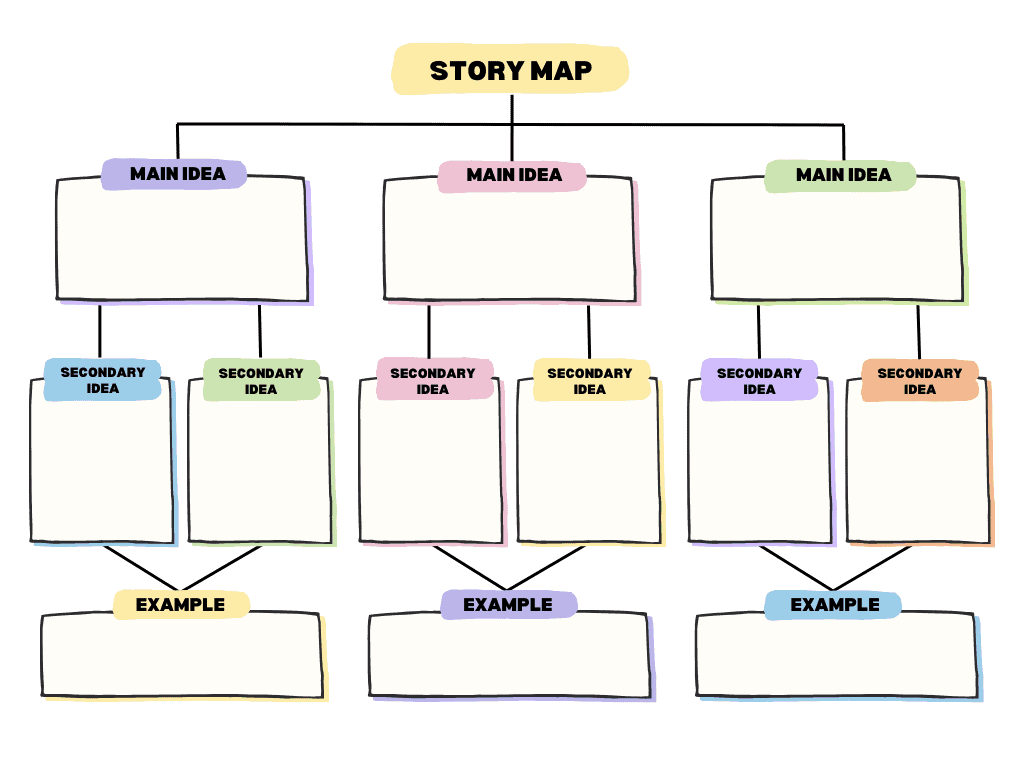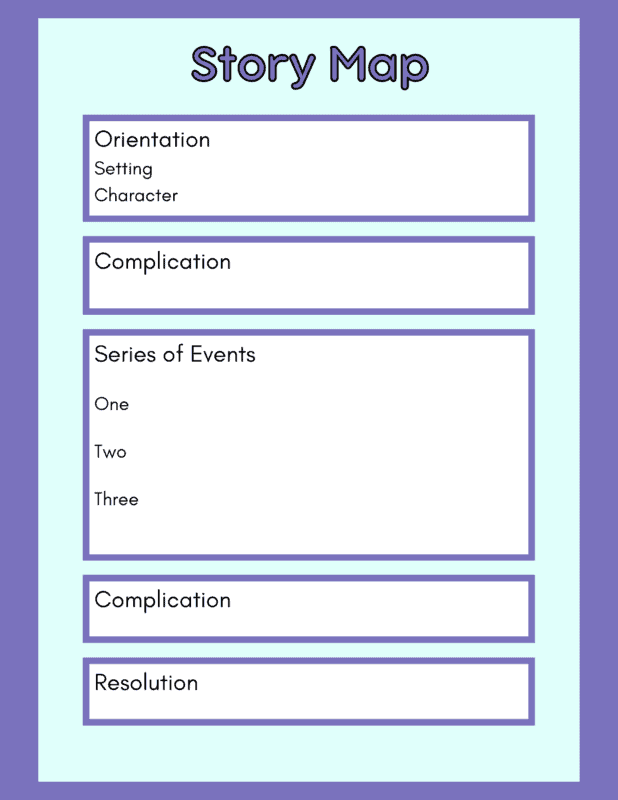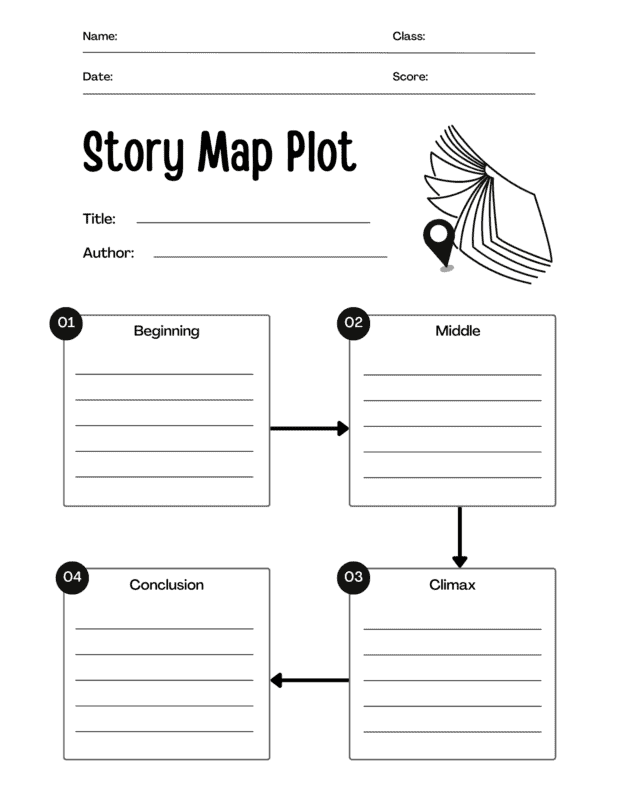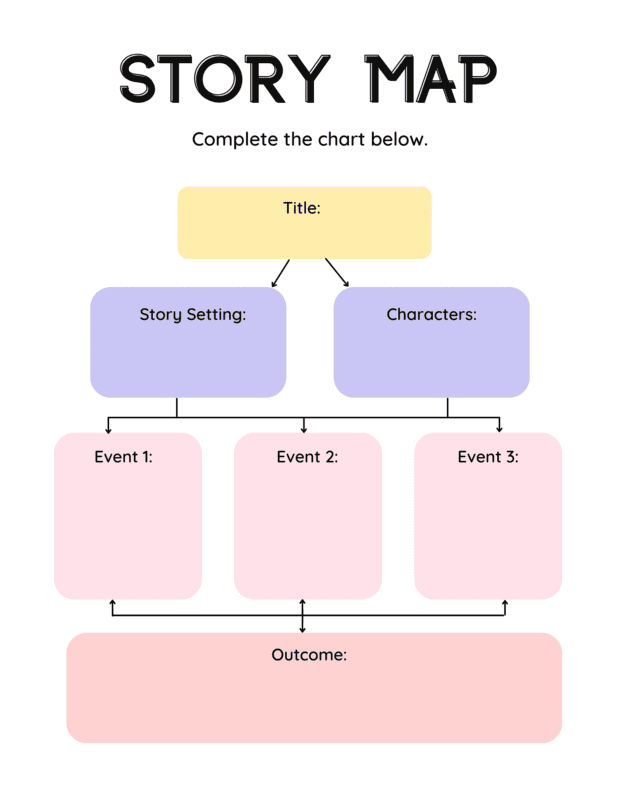12 Free Story Map Templates PDFs (Story Elements)
Most people have read a book, and then went to see the movie. Or, saw the movie and then went back and read the book, right? Chances are, that is a book that you can recall with more detail that other books you have read. Because it was a multisensory approach to the content.
The Orton Gillingham approach is around 100 years old and the philosophy is still valid today. We know that reading comprehension goes far beyond reading a book or story. Presenting the content in visual, audio and tactile content greatly increases reading comprehension.

Graphic organizers help students visualize written concepts. A story map is a literacy strategy that uses a graphic organizer to help students learn the elements of a book or story.
By identifying story characters, plot, setting, problem and solution, students read carefully to learn the details. The graphic organizer helps them better understand the different parts and how they relate to each other.
Research indicates that students who struggle significantly with reading comprehension benefit from story mapping.
I have other similar resources on this site, so maybe you’re looking for
- Graphic Organizer (60 free PDFs)
- ADHD To-Do List Templates
- High School Free Printable Study Skills Worksheets
Will story mapping help my child?
Parents and teachers are busy people. We all have to make the most of our time, right? So we don’t want to add on extra steps or interventions if they don’t work.
The only real way to determine if this will work is to try it. I always recommend trying it with preferred content first.
But, the good news is–the graphic organizers for story maps that I have provided here are very basic and simple to use.
Many teachers use these in their classrooms and curricula already. I’d email your child’s teacher(s) and ask.
Dyslexia and Story Mapping Graphic Organizers
Story maps are really beneficial for so many students. And putting it in a visual format such as a graphic organizer can be really helpful.
But, it’s important to remember that for some reading disabilities, no one single intervention is going to fill the gaps for needs. Always make sure that comprehensive evaluations have been done and that all the needed appropriate interventions are being implemented.
We have a separate and comprehensive post on developing a meaningful IEP for dyslexia.
A story map presented visually can help many students improve their reading comprehension. But comprehension is just one part of reading. And, if the child hasn’t gotten past being able to decode…a story map won’t help. Make sense?
Components of a Story Map
This printable 6 page graphic organizer has several components of a story map. It is not necessarily intended that you use all 6 every time. Pick and choose only the skills or concepts you are trying to reinforce.
- Story Map: This is a basic framework for a student to create a story map for what they have just read. It has only 4 components to keep it simple.
- Character Profile: A student can profile one or all of the characters in the story.
- Reading Questions: While these are page 3 in the graphic organizer, I would use this component last. Use it to check comprehension, working memory and recall.
- Compare and Contrast: I left this simple for a reason–so that the adult can have the student compare and contrast anything in the story. Before/after, two different characters, etc.
- Sequencing Worksheet: Good for comprehension and recall.
- Clues and Inferences: Great for kids who struggle with inference skills. To assist, you can list the clues on another sheet of paper and then explain the possible inferences.
Story Element Graphic Organizer
Sometimes story maps are called story elements. It’s a personal preference, I suppose. Though some teachers are trying to emphasize the various parts of a story, or elements. In that case it may be more useful to use the word element.
Here are some free PDF story element graphic organizers.
Story Element Chart
First up is a story element chart.
This is what it looks like. It charts out the various main idea elements of a story.

Story Element Worksheet
Here is a free worksheet for students who are working on many of the elements of a story.
And here is what it looks like.

Story Elements: Problem Solving
Here is another option.
This option is probably better for older students. It also requires sequencing skills.

Story Plot Element Worksheet
If students are working on identifying the plot of a story, this is a good option.
And here is what that looks like.

Story Organizer
A simple option.

And last but not least–

